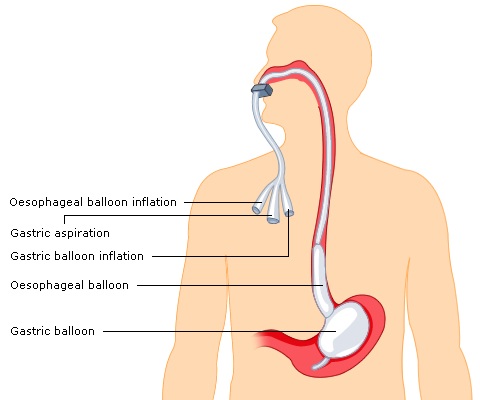Sengstaken-Blakemore Tube
A Sengstaken-Blakemore (SB) tube is a device that can be used as a temporary measure to tamponade upper GI variceal bleeding either pre- or post-endoscopy when haemostasis cannot be achieved. It allows time to resuscitate the patient, reverse any clotting, and organise for the patient to have more definitive intervention. This may include repeat endoscopy or transjugular intrahepatic portal systemic shunting (TIPSS). The components of the SB tube include an oesophageal and a gastric balloon (Fig 1).
Question: What are the risks of using an SB tube?
Click here for the answer.

A Sengstaken-Blakemore (SB) tube is a device that can be used as a temporary measure to tamponade upper GI variceal bleeding either pre- or post-endoscopy when haemostasis cannot be achieved. It allows time to resuscitate the patient, reverse any clotting, and organise for the patient to have more definitive intervention. This may include repeat endoscopy or transjugular intrahepatic portal systemic shunting (TIPSS). The components of the SB tube include an oesophageal and a gastric balloon (Fig 1).
Question: What are the risks of using an SB tube?
Answer: The most significant risk associated with the SB tube is oesophageal perforation. This is because it is usually inserted blindly and, if the gastric balloon is inflated in the oesophagus, it can cause rupture, mediastinitis and death.
Other complications include endotracheal intubation, which is why it is important to secure the airway prior to inserting the SB tube. This should be performed by an experienced clinician.
